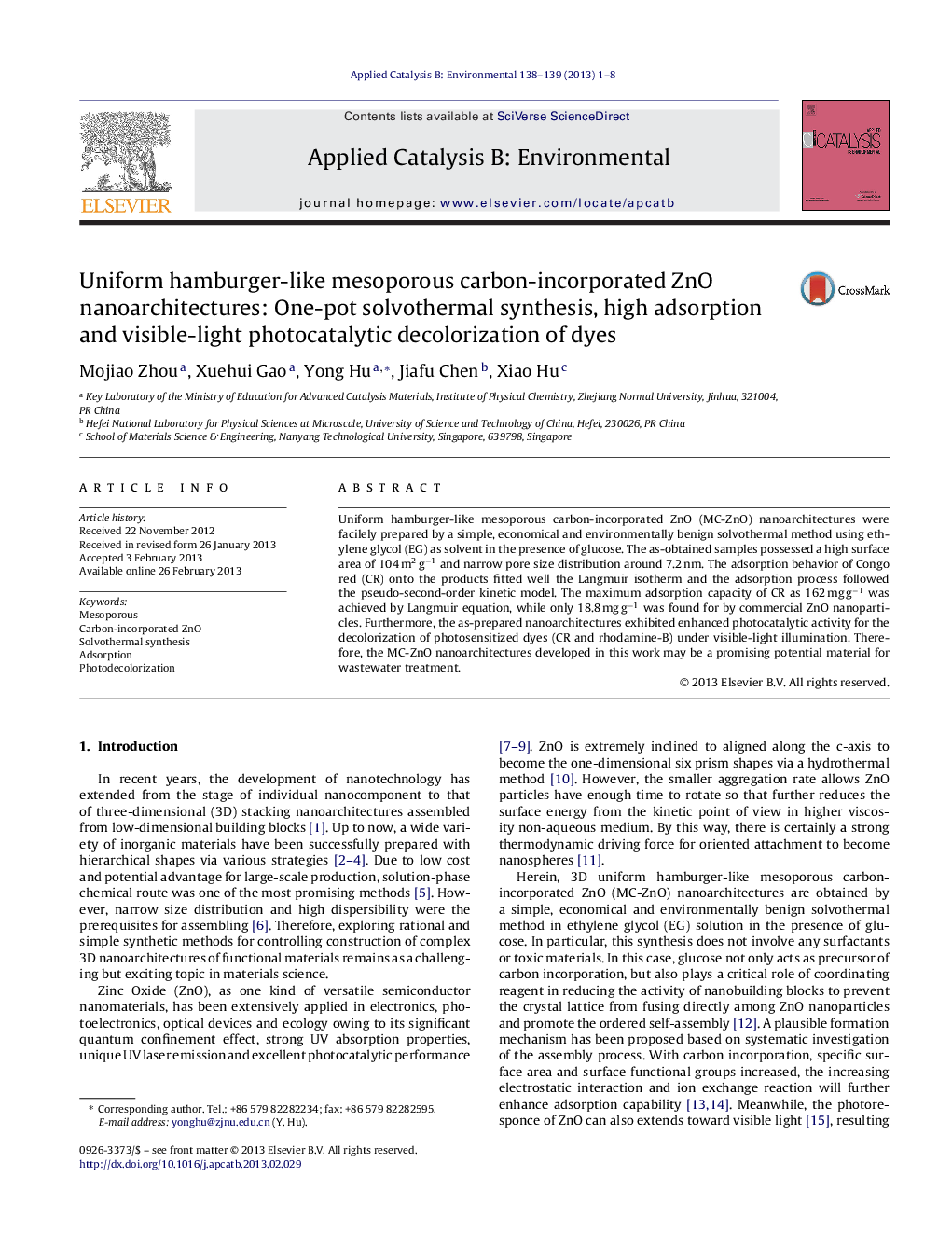| Article ID | Journal | Published Year | Pages | File Type |
|---|---|---|---|---|
| 46201 | Applied Catalysis B: Environmental | 2013 | 8 Pages |
Uniform hamburger-like mesoporous carbon-incorporated ZnO (MC-ZnO) nanoarchitectures were facilely prepared by a simple, economical and environmentally benign solvothermal method using ethylene glycol (EG) as solvent in the presence of glucose. The as-obtained samples possessed a high surface area of 104 m2 g−1 and narrow pore size distribution around 7.2 nm. The adsorption behavior of Congo red (CR) onto the products fitted well the Langmuir isotherm and the adsorption process followed the pseudo-second-order kinetic model. The maximum adsorption capacity of CR as 162 mg g−1 was achieved by Langmuir equation, while only 18.8 mg g−1 was found for by commercial ZnO nanoparticles. Furthermore, the as-prepared nanoarchitectures exhibited enhanced photocatalytic activity for the decolorization of photosensitized dyes (CR and rhodamine-B) under visible-light illumination. Therefore, the MC-ZnO nanoarchitectures developed in this work may be a promising potential material for wastewater treatment.
Graphical abstractFigure optionsDownload full-size imageDownload as PowerPoint slideHighlights► Uniform hamburger-like mesoporous carbon-incorporated ZnO nanoarchitectures were synthesized by a facile one-pot solvothermal route. ► The as-obtained samples possessed a high surface area of 103.7 m2 g−1 and narrow pore size distribution around 7.2 nm. ► The products exhibited high adsorption capability for Congo red. ► They also demonstrated enhanced photocatalytic activity for the decolorization of dyes under visible-light illumination.
